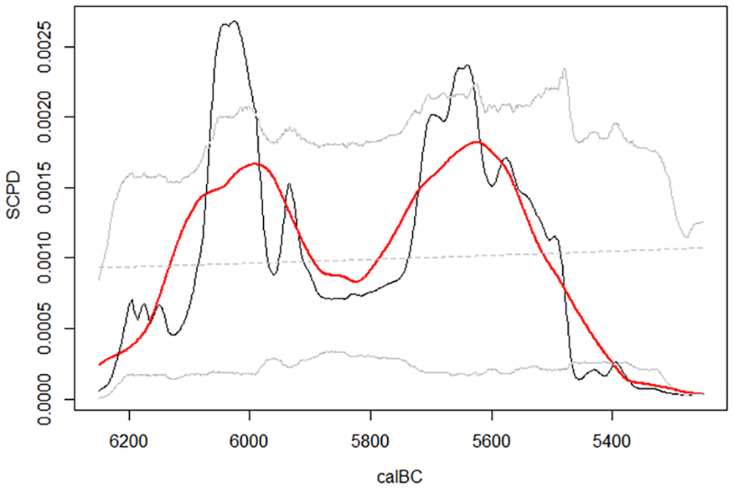Paleodemography
Paleodemography can be defined as the reconstruction and study of population size, structure and dynamics, based on various lines and classes of archaeological evidence. There are several major lines of our paleodemographic research, each with its own methods, depending on the class of evidence used for demographic reconstructions:
Skeletal paleodemography is based on the applications of methods of physical anthropology and osteology to human skeletal remains in order to determine individual sex and age. The sex and age estimates are used to reconstruct mortality and fertility patterns of past populations and our research is focused on the investigation of those patterns beween 10000 and 5000 BC.
Settlement paleodemography is most broadly defined as the reconstruction of population size and dynamics from settlement remains. Our work is orientated toward the population size reconstructions for the Neolithic sites in the Central Balkans by statistical method of Approximate Bayesian computation that simulates population dynamics and retrieves the plausible demographic parameter values by comparing the simulated and empirical settlement data. Another important part of the settlement paleodemography is the reconstruction of settlement patterns. In that context, the understanding of interactions with the environment – the ways different aspects of the biosystem (fertile soil, position of the rivers and forests, etc.) affected the choices of the locations suitable for establishing the settlements of the first farmers, their nature and duration – is of crucial importance.
The Summed Calibrated Radiocarbon Probability Distributions Method (SCPD) The basic assumption is that the amount of material culture produced by a population is directly proportional to its size and frequency of dates from a particular time period would be directly proportional to the total number of objects from that period, and further – resemble the population size. Over the 200 new radiocarbon dates from the Balkans, obtained within the BIRTH project, shed new light on the dynamics of human populations during one of the most important periods in human history, and contributed to the research of the nature of the Neolithic Demographic Transition.

Projects:
ERC Birth – Birhts, mothers and babies: prehistoric fertility in the Balkans between 10000 – 5000 cal BC, GA 640557, ERC-2014-STG
References:
Stefanović, S., Porčić, M., Blagojević, T., Jovanović, J. 2020 (in press). Neolithic Settlements in the Central Balkans between 6200 and 5300 calBC: Issues of Duration and Continuity of Occupation. In: Tasić N, Urem-Kotsou D. and Burić M. (ed.) Making Spaces into Places: The North Aegean, theBalkans and Western Anatolia in the Neolithic. BAR International Series.
Porčić M, Blagojević T, Pendić J, Stefanović S. 2020. The timing and tempo of the Neolithic expansion across the Central Balkans in the light of the new radiocarbon evidence. Journal of Archaeological Science: Reports, https://doi.org/10.1016/j.jasrep.2020.102528
Porčić, M., Blagojević, T., Pendić, J. and Stefanović, S. 2020. The Neolithic Demographic Transition in the Central Balkans: population dynamics reconstruction based on new radiocarbon evidence. Philosophical Transactions of the Royal Society B: Biological Sciences. DOI: 10.1098/rstb.2019.0712
Blagojević T., Porčić M., Penezić K., Stefanović S. 2017. Early Neolithic Population Dynamics in Eastern Balkans and the Great Hungarian Plain. Documenta Praehistorica XLIV, p. 18-33. doi: 10.4312/dp.44.2
Porčić M, Blagojević T, Stefanović S. 2016. Demography of the Early Neolithic Population in Central Balkans: Population Dynamics Reconstruction Using Summed Radiocarbon Probability Distributions. PloS ONE 11 (8): e0160832. doi:10.1371/journal.pone.0160832